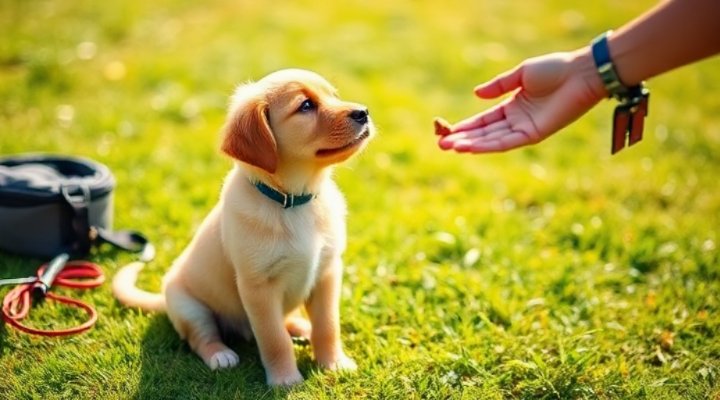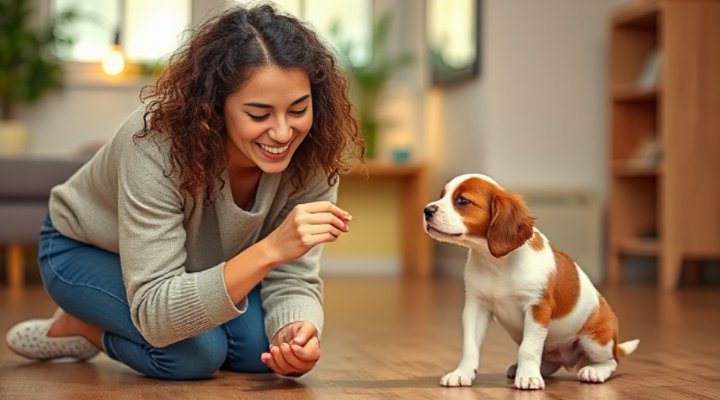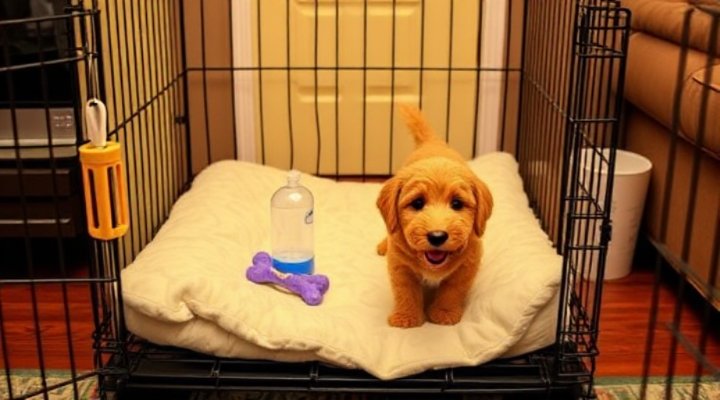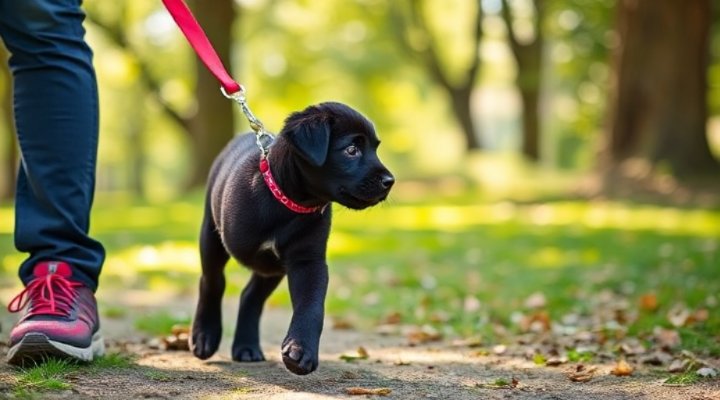Bringing home a new puppy is an exciting adventure filled with cuddles, playtime, and…chewed shoes? Without proper puppy training tips, that adorable ball of fluff can quickly turn your home into chaos. But fear not! With the right approach, you can shape your puppy’s behavior from the start.

Start With Basic Commands
Every well-trained dog begins with mastering simple commands. According to the American Veterinary Society of Animal Behavior, puppies can start learning basic cues as early as 7-8 weeks old. Here are the fundamental commands to teach first:
- Sit: The foundation for all other commands
- Stay: Crucial for safety and impulse control
- Come: Potentially life-saving recall command
- Leave it: Prevents grabbing dangerous items
Our article on how to train a puppy to sit offers step-by-step guidance for this essential first command.

The Power of Positive Reinforcement
Modern puppy training tips emphasize positive reinforcement – rewarding desired behaviors rather than punishing mistakes. This method builds trust while effectively shaping behavior:
- Mark good behavior immediately with a clicker or verbal marker like “Yes!”
- Follow with a high-value treat (small, soft pieces work best)
- Pair with affectionate praise and petting
- Keep sessions short (5-10 minutes) but frequent (3-5 times daily)
As noted in our guide on positive reinforcement dog training, this approach yields faster results and creates a happier learner.
Common Training Mistakes to Avoid
Even with the best puppy training tips, owners often make these errors:
- Inconsistent rules (allowing jumping sometimes but not others)
- Long training sessions that overwhelm puppies
- Using punishment that creates fear rather than understanding
- Expecting too much too soon from young puppies

Socialization: Beyond Basic Obedience
The American Kennel Club emphasizes that proper socialization between 3-14 weeks is crucial for raising a confident, well-adjusted dog. Our guide on solving dog anxiety issues shows how early experiences shape adult behavior. Socialization should include:
- Meeting various people (different ages, appearances)
- Positive experiences with other vaccinated dogs
- Exposure to common environmental stimuli (traffic, elevators, etc.)
- Handling exercises (paws, ears, mouth touched gently)
Remember to keep all socialization experiences positive and let your puppy retreat if overwhelmed.

Crate Training Essentials
A properly introduced crate becomes your puppy’s safe den and prevents destructive behaviors when unsupervised. Follow these puppy training tips for successful crate training:
- Choose the right size crate (enough room to stand and turn around)
- Make it comfortable with bedding and safe chew toys
- Feed meals near then inside the crate to build positive associations
- Gradually increase duration, starting with just minutes
For more detailed guidance, see our article on choosing the best crate for puppies.

House Training Fundamentals
Consistency is key when house training your puppy. Follow this schedule:
| Age | Frequency | Nighttime |
|---|---|---|
| 8-10 weeks | Every 30-60 minutes | 2-3 breaks |
| 10-12 weeks | Every 1-2 hours | 1-2 breaks |
| 12-16 weeks | Every 2-3 hours | Possibly 1 break |
Always take your puppy to the same spot and reward immediately after elimination. For more tips, check our house training guide.
Building on the Basics
Once your puppy masters fundamentals, you can progress to:
- Polished leash walking skills
- Advanced commands like “place” and “heel”
- Reliable recall in distracting environments
- Fun tricks that provide mental stimulation
Remember that training continues throughout your dog’s life. The American Kennel Club recommends ongoing training to keep your dog’s skills sharp.
Related Keywords
puppy obedience training | positive reinforcement dog training | crate training puppies | house training tips | puppy socialization | basic dog commands | preventing behavior problems
